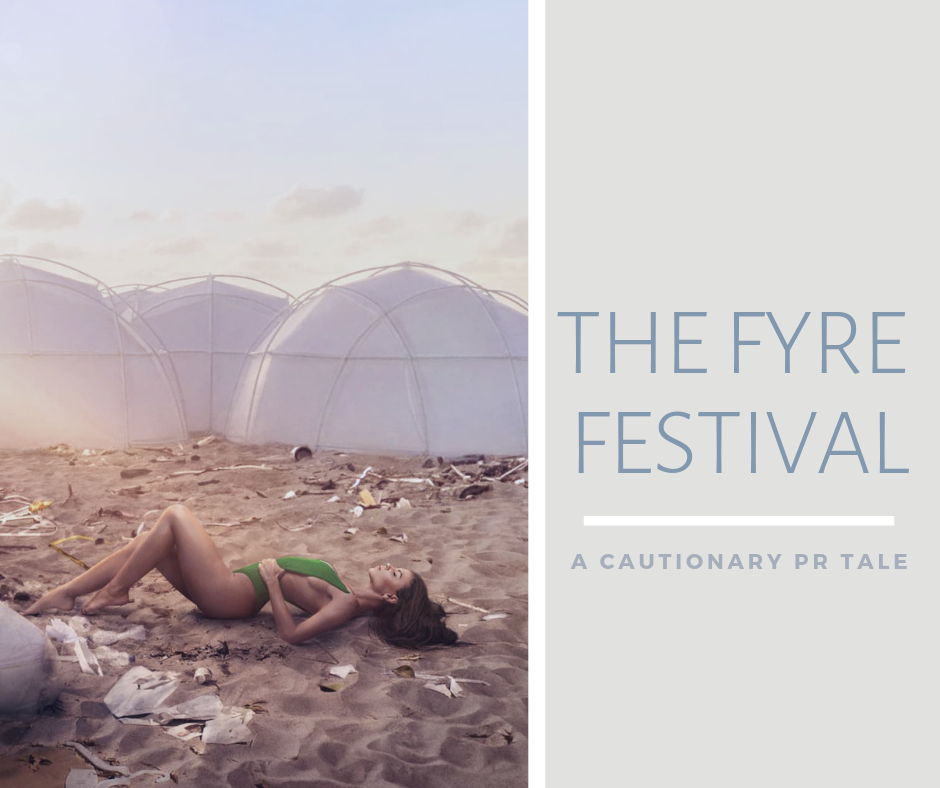
If you haven’t already seen it, chances are you’ve heard about the Netflix Fyre Festival documentary. It follows entrepreneur Billy McFarland and rapper Ja Rule as they attempt to throw the world’s most exclusive music festival. And fail. Spectacularly.
Thousands of wealthy millennials headed to the Bahamas for what they believed was an elite party on a luxury island and instead found themselves stranded, sleeping in hurricane tents, with little food or water. Anyone with a communications or PR background watching this documentary will cringe at the poor communication and disastrous planning for this event. But as with every failure, there are lessons to be learned.
The power of the influencer
The festival planners did one thing really, really well — building hype on social media. Before they had even begun to plan the festival, they launched a digital marketing campaign that spared no cost. They hired a bevy of a-list models to appear in the promo video and paid 64 of the top influencers and celebrities on Instagram to post a mysterious orange tile with a link to the Fyre website. Within the first 24 hours, the posts received more than 300 million impressions, and it didn’t take much longer for the tickets to sell out.
This campaign illustrates how much power influencers can have over a generation. It’s unheard of for a first-year music festival to sell out. But thanks to their unified influencer campaign, Fyre Festival was shaping up to be the biggest and most exclusive event of 2017. Their marketing efforts were clearly successful — but their success stopped there.
All promotion, no planning
McFarland and his team had done a good job building up the Fyre Brand, but they seemed to have no clue how to execute their vision. The main barrier that Fyre Festival faced from the start was timing — they released their promotional campaign and sold all of their tickets before they had even begun planning the festival. The clock was ticking, and they had a massive undertaking ahead of them. Music festivals can take up to a year to plan, and they had just a few months to work with. In addition, they did not have proper infrastructure, housing or food on the island for guests. They worked day and night to build the site but they were short on time and low on cash. McFarland and his team knew weeks beforehand that Fyre Festival was doomed, but they were in too deep.
Honest, open communication is key
Maintaining an open, honest dialogue is crucial with both your internal and external audiences. From the very beginning, there was a lack of open communication between the festival workers themselves, and with the attendees. McFarland was warned countless times about the impending disaster that the festival was sure to be but he carried on with his illusions of grandeur. He failed to acknowledge that the festival was in crisis, and anyone who challenged him was immediately let go. He told countless lies to his employees and investor. He refused to inform the festival attendees what was going on. If he had been honest and known when to pull the plug, it wouldn’t have turned into the fiasco it became.
Fyre Festival did a great job in their marketing and branding efforts, but their event planning and logistics were catastrophic. At its core, the Fyre Festival was a good idea. The lack of organization and strategy ultimately led the Festival to its downfall. From a PR perspective, the Fyre Festival disaster shows how valuable a strong communications team can be.
__
Allison Davis – Editor
